

|
|



|
|||
|
Stage equipment
|
Elevators
|
Compressed gases
|
Press
|
|
|
|||
| -- Back to more current news -- | -- Go to older news -- | ||
MADferia 2017 - XII Madrid Performing Arts Fair
|
|||
34th Malaga Theater Festival
|
|||
Folklore research grant CIOFF - INAEMMonday, November 21, 2016 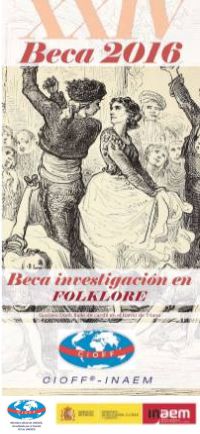
The Spanish section of CIOFF® (International Council of Organizations of Folklore and Traditional Arts Festivals) and the INAEM (Institute of Performing Arts and Music) of the Ministry of Education, Culture and Sports, in order to promote research In the field of Traditional Culture, they decide to establish an annual research grant in favor of all the disciplines that are contained within this field of action. The scholarship corresponding to this 2016 call will be dedicated to the topic "Dance, dance and popular music (song and musical instruments), related to any of the different cultures of the Spanish territory". The jury may decide to declare the award of the scholarship void if, in its opinion, the projects presented do not meet the conditions and guarantees necessary for their realization. Individuals as well as work teams trained for this purpose will be eligible for this scholarship. In this second case, the team must be represented by a manager responsible for the project. The enjoyment of this scholarship will be incompatible with another scholarship or financial aid granted to carry out the same project. Any citizen legally established in Spain can access this scholarship. The proposed work must be completed within a maximum period of one year. The endowment of this scholarship will be 4,500 euros. |
|||
The Vitoria-Gasteiz theater festival: four decades opening the doors to dreamsTuesday, October 11, 2016 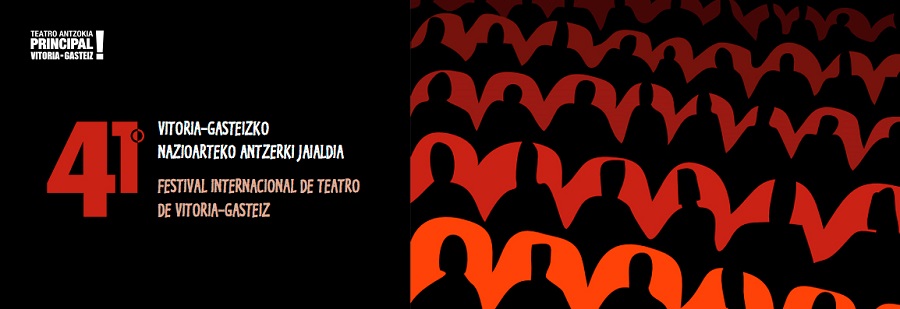
The festival is one of the most relevant cultural manifestations for Vitoria citizens and a benchmark for many Spanish cities. For four decades the festival has offered a wide selection of national and international theater, accommodating all genres, from classical to the most avant-garde theater. The theater festival stands as the fundamental tool that promotes the performing arts in Vitoria-Gasteiz and Álava. During its four decades of existence, the festival has opened the doors to thousands of people of various generations, who now constitute a loyal, demanding and knowledgeable audience that fills the theaters of the city. A project always alive How to renounce the "Festival" phenomenon in a city that has one of the oldest, even today, despite the fact that similar projects have multiplied like spores in all corners of our geography? So many years of work and such a warm response from the public, it well deserves to keep an event of relevance. Something expected every fall in the city of Vitoria both by the population and the media, as well as the companies themselves that want to show their works at the Teatro Principal Antzokia and the rest of the municipal theaters. The festival is doomed to be a cultural project in constant search for definition, but always eagerly awaited ... The festival today
Since last October 6, a new edition has been held, the 41st Vitoria-Gasteiz International Theater Festival, full of shows and which will come to an end on November 24. Here we leave the magazine with all the programming where we can keep up to date with each work. |
|||
A new edition of the cinema party is coming, accredit yourselfThursday, September 22, 2016 
Film Festival 2016
|
|||
This Friday begins one of the most important international film festivalsMonday, September 12, 2016 
San Sebastian International Film Festival 2016
|
|||
28th Live Music Market of Vic
|
|||
Santander International Festival
|
|||
International Festival of Theater, Music and Dance of San JavierTuesday, July 26, 2016 
The San Javier International Festival of Theater, Music and Dance, declared of Regional Tourist Interest, began its journey in 1969 thanks to the initiative of a group of theater fans who staged their works on a small stage in a small room with chairs of wood. Over time, the regional theater groups gave way to the important national and international companies; the provisional and tiny enclosure, to a magnificent auditorium, and this festival became one of the most important attractions of the cultural offer that the Region of Murcia offers in summer, rubbing shoulders with the best festivals that are celebrated in Spain (Mérida, Almagro ...). The San Javier Theater, Music and Dance festival has become a mandatory meeting point for all those fans of these disciplines who come together every year in August at the Almansa de San Javier Park Auditorium. Forty-six years of history, twelve directors, more than two hundred premieres, more than four thousand actors, approximately three hundred and fifty thousand spectators, some nine hundred sound and lighting technicians, around eight hundred hours of spectacle and countless moments of sensations and good vibes. They meet in a magical setting that, in the open air, shows us the best shows on August nights. From the Moscow Ballet, to Cristina Hoyos, through Julio Bocca, Mario Gas, Marcel Marceau, Marianne Faithfull, La Fura dels Baus, Paco de Lucía, Joan Manuel Serrat and Ricardo Miralles, La Cuadra de Sevilla, Comediants, Rafael Amargo, Teatro de la Abadía, Juan Carlos Rubio, Dagoll Dagom… These are some of the names linked to the most recent history of the festival. The festival will be held from August 3 to 23 and presents a total of 14 shows, 8 theater, one for family audiences, 3 music, including the return of La Fura dels Baus, as well as a concert exclusive to Miguel Poveda, and one for dance, with 12 soloists from the Compañía Nacional de Danza to which are added two other shows outside the auditorium, one for the circus in the Plaza de España, in San Javier, and another on the street in the Paseo Colon in Santiago de la Ribera. The 47th edition of the Festival will begin on August 3 with "La estupidez", a work by the Argentine author, little represented in Spain, Rafael Spregelburd set in Las Vegas. The play that has actors Toni Costa and Fran Perea in the cast, directed by Fernando Soto, is a kind of road-movie adapted to the theater that tells five parallel stories that intersect becoming one. 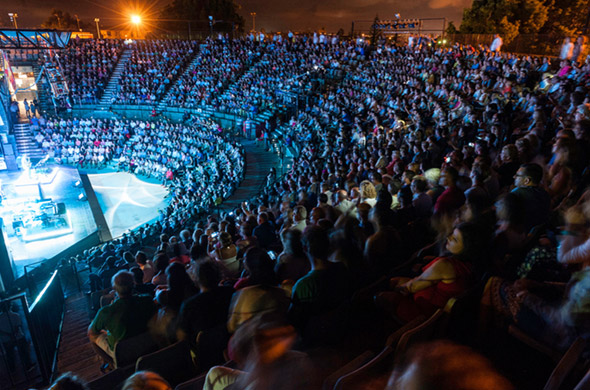
|
|||
Olite Classical Theater FestivalFriday, July 22, 2016 It will take place from today, July 22, until next August 6 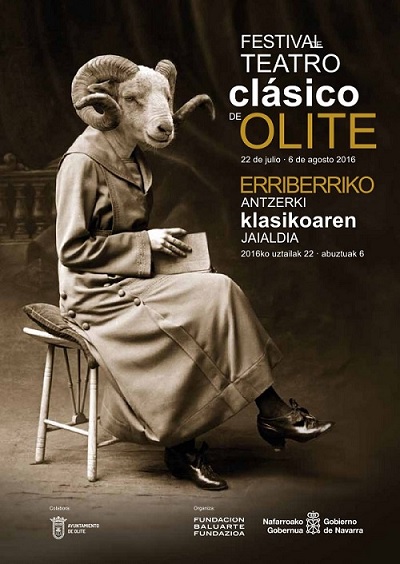
The Olite Palace, an extraordinary Gothic monument, housed the court of King Carlos III. In that place, art and culture flourished and from its battlements the courtiers contemplated the games of arms or with bulls that took place in La Cava. Shows Today, La Cava continues to be a space where the best theatrical productions are represented, those that have not yet been seen in Navarra and that make up an attractive, sometimes risky program of proposals that have their creative starting point in the classical. In addition to the programming of shows that sometimes leave the main stage to occupy other spaces within the castle itself or on the streets of the city, the festival includes other activities, such as workshops and courses. The commitment to new languages, shows for family audiences and the occupation of the street as a first-rate stage space is one of the hallmarks of the Olite Classical Theater Festival as well as the participation of a good number of agents from the theater sector of the provincial community and the collaboration of the Olite City Council and its most dynamic agents. The Olite Classical Theater Festival begins in the second half of July and runs until the beginning of August, including at least three weekends in its calendar. |
|||
IBERESCENA Grants 2016/2017Thursday, July 14, 2016 Submission of applications until September 30, 2016 From 04/11/2016 to 09/30/2016 The Ibero-American Fund for Iberescena Aid executes a program to promote, exchange and integrate the activity of the Ibero-American performing arts, with the aim of promoting in the Member States and through financial aid, the creation of a space for the integration of the Arts Scenic. The application period for Iberescena 2016/2017 grants is open from April 10 to September 30, 2016. Modalities: - Grants for the co-production of Ibero-American shows - Grants for networks, festivals and scenic spaces - Aid for Ibero-American scenic creation in residence 
Last year, the Intergovernmental Committee of the Iberescena Program (CII), which met in the city of Montevideo (Uruguay), granted financial aid in its different forms of participation for a total value of 1,045,278 euros. These were awarded as follows: - 27 grants for the co-production of theater, dance and circus shows - 43 grants to festivals, networks and circuits - 38 grants for dramaturgical and choreographic creation Applications can be processed through the platform enabled on the web and in a traditional way through paper. For more information, you can consult the complete bases in: call bases. |
|||
One of the most important Theater Festivals of the year is backMonday, July 4, 2016 This Thursday, July 7 and until July 31, the thirty-ninth edition of the Almagro International Classical Theater FESTIVAL will be held. 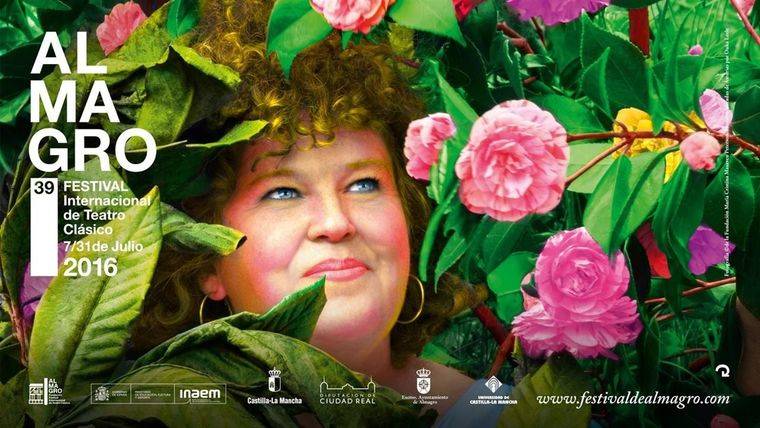
This festival held in a historic city of La Mancha and which has become an unmissable event for all theater lovers, celebrates its 39th edition. The company in charge of inaugurating this edition will be Puja Teatro Aéreo, coinciding with the IV Centenary of the death of Miguel de Cervantes, presents its new staging of theater, movement, aerial acrobatics and live music based on the inner journey of Don Quijote de la Mancha and his faithful squire. The initiatory journey that explains the history of this current HERO: a dreamer and a guide, a necessary guide in a world in crisis and asleep in human values. A vindication of the ideals and the necessity of utopia. As the good old Sancho tells Quixote on his deathbed, that perhaps the madman was not him but the world in which he had lived. The program can be consulted through the official page at the following link: www.festivaldealmagro.com |
|||
Artists take to the streets to celebrate Music DayTuesday, June 21, 2016
- The main Spanish cities celebrate the European Music Day this week. 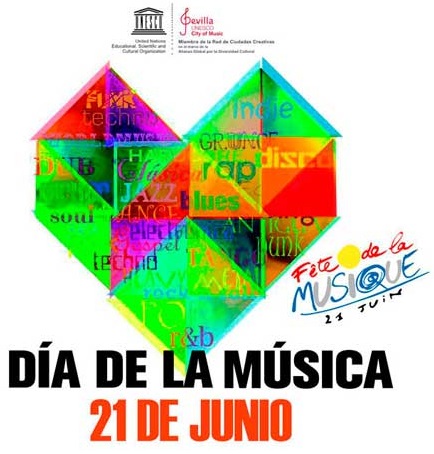
This Tuesday, June 21, the European Music Day is celebrated (a tradition started in 1982 by our French neighbors), a great opportunity to support and defend the Spanish music industry. An industry that has suffered in recent years due to the economic crisis and laws such as the increase in cultural VAT, and that is recovering little by little by betting on new forms of consumption by citizens. In a country where piracy is finally declining and users who decide to pay to listen to music online are growing, record companies try to reach the young market through social networks. Festivals such as those organized this week by the main cities of the country allow thousands of people to listen to their favorite artists in concert. We review the activities that some of these cities have prepared. Madrid. The capital opens the Madrid Music City festival this Tuesday. During this week there will be activities in Matadero and the Conde Duque cultural center around music, with exhibitions, debates or cinema. Saturday will be the icing on the cake with the MMC Fest, an event that will be held in the Matadero square that will feature performances by Soleá Morente, Imelda May, Unknown Mortal Orchestra, Molotov Jukebox and Parov Stelar. The Retiro pond will host the last concert of the Classical x Contemporary cycle on Tuesday. Under the motto "Music saves us", the Fourth and Tenth Symphonies by Gustav Mahlers will be played, for piano for 4 hands. On the night of the 21st, in the La Riviera room at 7:00 p.m., the new edition of the # MiMúsicaTuRefugio festival will also take place, a charity macroconcert in favor of organizations that help refugees who want to enter Europe. Andrés Suárez, Depedro and Rozalén among other artists will participate in the Madrid edition. The entrance has a price of 15 euros. Barcelona. The # MiMúsicaTuRefugio concert will also have its Barcelona version, with the same objective, but this time in the Apolo hall. Amaral, Delafé, Elefantes, Joana Serrat, La Pegatina, Maika Makovski and Sidonie will play from 8:00 p.m. on the 21st. The Barcelona Symphony Orchestra will offer a concert the same day on Sant Sebastiá beach at 8.30 pm, with works by Beethoven, Copland, Mendelssohn and Dvorak. Andalucía. The Institute of Culture and the Arts of Seville has organized, as every year, about thirty musical activities. Different musicians from the Royal Symphony Orchestra of Seville will play in public spaces in the capital, such as Plaza Nueva or Plaza de la Encarnación. At the Puerta de Jerez from 6:00 p.m., young people will be able to enjoy the No Festival, a free event in which local bands participate. Musical events will also take place in the city of Cádiz this week, including a Micro Open session on Friday 24. Valencia. The Levantine city will pay tribute to the Music Day on the 24th and 25th, at the Cerati Café –where the concerts will be free– and at the Deluxe Pop Club, with the participation of Moonflower and Doctor Lobo at a price of 3 euros. Source: www.20minutos.es |
|||
Modular platforms for events TRENOMAT SpainWednesday, June 8, 2016 Our modular aluminum stages will make your events an easy and practical way to work, always keeping elegance and the best finishes. These structures are built using very resistant high quality aluminum and wood materials. Removable modular, it can be configured in a wide variety of heights and configurations of the different models and finishes for interior and exterior. The aluminum legs of the manual models can be fixed legs, telescopic legs or scissor legs. All types of legs are securely locked to the platforms allowing these platforms to be able to support weight up to 1,500 kg per m2, guaranteeing safety and stability. We also have a wide range of accessories such as stairs, ramps, railings, skirts, transport trolleys, etc. Enter www.trenomat.es, write to us at info@trenomat.es or if you prefer, call us at 926 513 045 for more information or to request a budget without obligation. 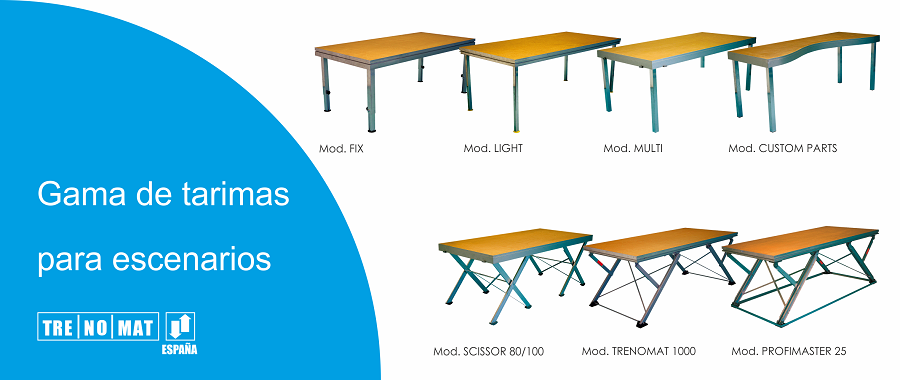
Source: www.trenomat.es |
|||
65 International Festival of Music and Dance of Granada 2016Thursday, June 6, 2016 The 65th edition of the Granada International Music and Dance Festival will be held between June 17 and July 8, 2016 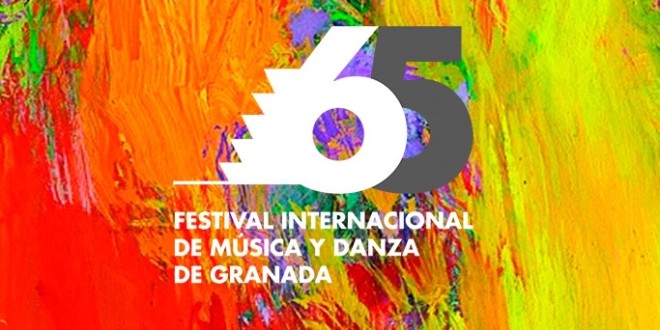
In addition, the next festival will commemorate the 80 years since the death of the poet Federico García Lorca, the 400th anniversary of the death of Miguel de Cervantes and William Shakespeare and the centenary of Noche en los Jardines de España, the top symphonic work in the race by Manuel de Falla that he himself performed one night in June 1916 on the piano. Literature will have a special attention at the 65th edition of the Granada Festival, which received recognition from UNESCO as "City of Literature" in December 2014. And what to say that in 2016 and on the occasion of the 65th birthday of the festival there will be extraordinary activities. The poster for the 2016 edition 'Serliana del Palacio de Carlos V' is the work of the author María Teresa Martín-Vivaldi. To get tickets, you can access the website ticketsgranadafestival.org since last April 13 or from the festival box office located on Calle Mariana Pineda s / n 18009 Granada. PROGRAM
Promotional Video of the Granada International Music and Dance Festival: |
|||
The Palau de les Arts de Valencia says goodbye until September with a double night open dayWednesday, June 29, 2016 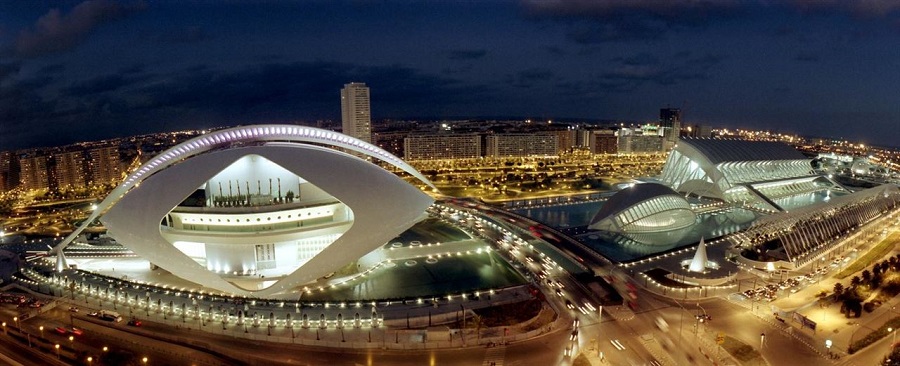
The Palau de les Arts Reina Sofía celebrates a double edition of its nightly open day "Nit a Les Arts" on Friday and Saturday nights this week, with which the cultural enclave says goodbye to the activity open to the public until the month of September, as reported by the Generalitat in a statement. "Nit a Les Arts" offers technical-artistic exhibitions and live performances by the Cor de la Generalitat Valenciana and the Orquestra de la Comunitat Valenciana, as well as an exhibition with costume elements and props from the opera "Aida" for anyone who approach the Santiago Calatrava building. As an end to the party, both nights, a music session with a DJ will put the end to the day. The activity to the public begins both on Friday 1 and Saturday 2 with the beginning of the six passes of the technical-artistic exhibition that hosts the stage of the Main Hall. In groups of up to 240 people, attendees have the opportunity to learn in situ, through a show lasting about 40 minutes, the operation of the stage machinery, lighting, audiovisuals and all the necessary elements to start an opera performance. The artistic part of this exhibition is in charge of the artists of the Center Plácido Domingo and the Ballet of the Generalitat, who offer a representation, directed by Emilio López, that combines elements of lyrical and dance. In order to enjoy this activity, those interested must present themselves at the Les Arts Ticket Office within 30 minutes prior to the start of the pass that best fits their agenda. A maximum of two invitations per person will be delivered until the capacity for each shift is completed. Likewise, the arts center reserves a quota of seats for these passes to its Season subscribers, who may make their reservation between June 29 and 30 in the section of the website that the coliseum will have for this purpose. Starting at 8:30 pm on both evenings, the Lobby of the Main Hall will open its doors to enjoy an exhibition of costumes and props from the opera "Aida", by Giuseppe Verdi. The public can freely enjoy the costumes designed by Moritz Junge for this Les Arts co-production with London's Covent Garden and the Oslo Opera House, as well as the props used in this montage. LIVE MUSIC AND FREE TOUR THROUGH THE TERRACES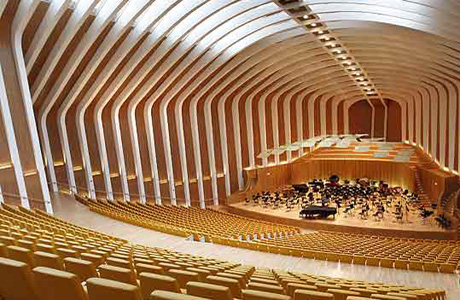
Starting at 8:30 p.m., the Palau de Les Arts Reina Sofía opens its terraces and balconies for anyone who wants to meet and enjoy the open-air spaces of the operatic enclave. The stable bodies of the Valneciano arts center; The Cor de la Generalitat, which is collaborating for the second time in this event, and the Orquestra de la Comunitat Valenciana put the musical note on Les Arts' blank night. The Los Toros Restaurant, located on the eleventh floor of the theater and connected to the Terrasses de les Palmeres, is the setting where, from 9:00 p.m. to 12:00 a.m., the Cor de la Generalitat and groups of Teachers of the OCV offer various performances. On Friday, the protagonists will be the musicians from the Palau de les Arts' formation with 25-minute micro-concerts at 9:00 p.m., 9:55 p.m. and 11:40 p.m. On Saturday, the soloists of the OCV will take turns with the Cor de la Generalitat Valenciana, which, accompanied on piano by Francisco Hervás and directed by Francesc Perales, performs choruses of titles that make up the 2016-2017 Season of Les Arts such as "L'elisir d'amore", by Donizetti, "I vespri siciliani" and "La traviata", by Verdi, "Gloria", by Vivaldi, "Israel in Egypt", by Hendel, or "Missa Papae MArcelli", by Palestrina. From 8:30 p.m. to 12:30 a.m., in addition, the Palay de les Arts has arranged a restoration service on both terraces on the eleventh floor, in which a spectacular LED sculpture will be displayed, courtesy of artist Nacho Ruiz. Starting at 12:30 am, on the same floor, the terrace overlooking the Turia Garden will become a large dance floor with a music session with live DJ, which will dismiss the activity of both days to the rhythm " dance ". The arts center will close its doors at 2 in the morning on both Saturday 2 and Sunday 3. |
|||
Open, until July 1, the call to participate in the 21st Mostra de Teatre de BarcelonaThursday, June 2, 2016 The Mostra de Teatre de Barcelona has opened the call to participate in its 21st edition. Until July 1, theater companies can submit their proposals to participate in this contest, which will be held from October to December 2016. 
Theater companies interested in participating in the 21st edition of the Mostra de Teatre de Barcelona can submit their applications until next July 1. The organization ensures that all those companies that "combine professionalism, creativity and quality" can participate. The shows will have to be "easy to assemble and disassemble, and not programmed commercially in Barcelona", he adds. The theater will provide the light and sound material it has available. The staging, props and specific technical material necessary for the performance will be borne by the participants. On the day of the premiere, the room will be made available to the group to rehearse and set up from morning until the time of the performance. All companies must have a sound and light technician. Necessary documentation To participate, companies must send the following information to the email artipolis@mostradeteatredebarcelona.com:
At the end of July the dates of the chosen works will be announced. The groups not selected will be informed by email. The videos received on DVD of the proposals not selected may be collected until September 30, 2016; after this period, they will be eliminated. Awards Three awards will be awarded at this Show: Best Show, Best Actress and Best Actor. The Jury's verdict will be made public during the Closing Party, in which the corresponding awards will be presented. The assembly recognized as Best Show will be awarded with its commercial programming in Barcelona at the Raval Theater, provided that it meets the necessary requirements for its exhibition, according to the Artípolis direction. The awarded shows will be part of the artistic offer of the Circuit of Professional Shows of the Artistic Diffusion Office of the Diputación de Barcelona. Source: www.redescena.net |
|||
| -- Back to more current news -- | -- Go to older news -- | ||
|
© Industrias Maquiescenic S.L.
Ctra. Alcázar de San Juan, Km 0,6
Phone:(+34) 926 513 045
E-mail:
|

|